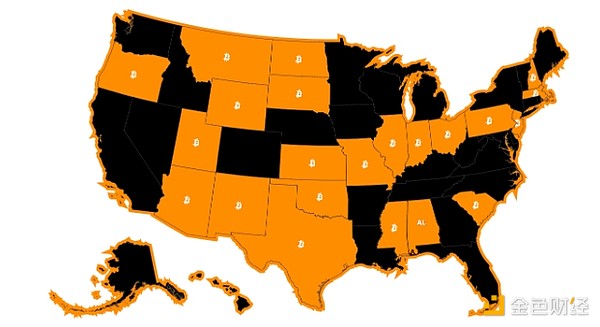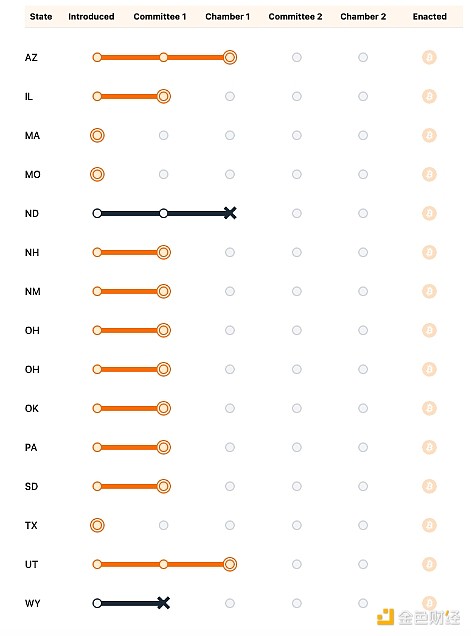Understand the US Bitcoin Reserve and Sovereign Wealth Fund in one article

Reprinted from jinse
02/07/2025·17DAuthor: Michael Tabone, CoinTelegraph; Translated by: Deng Tong, Golden Finance
On February 4, the new cryptocurrency tsar David Sacks said at a press conference that the bicameral cryptocurrency task force is studying the strategic Bitcoin reserve (SBR) and stressed that "the concept of sovereign wealth funds is a little different."
In fact, the Sovereign Wealth Fund (SWF) has been widely understood by the cryptocurrency community and is often mistaken for a tool that can naturally contain bitcoin or other digital assets. SWF is a government-owned investment fund that manages state savings, usually established by surplus incomes such as oil profits or trade gains.
Their main goal is to grow and protect wealth over the long term and ensure economic stability for future generations. Unlike central banks that focus on managing monetary and monetary policies, sovereign wealth funds take a more strategic approach to investing in real estate, stocks, infrastructure and local businesses.
Essentially, they prioritize steady growth over high-risk investments, making them an important tool for countries seeking to ensure financial security beyond immediate needs.
The definition of sovereign wealth funds is the reason Sacks quickly pointed out that sovereign wealth funds and SBRs should not be confused. The scope of sovereign wealth funds may be used for a wider purpose than specific reserves, including supporting domestic companies and market infrastructure.

23 states have introduced Bitcoin and digital asset legislation. Source: Bitcoin Laws
Bill Hughes, senior legal counsel at blockchain software company Consensys, noted that the concept of sovereign wealth fund was created by U.S. President Donald Trump on February 3 and could be used as "if the strategic reserve of cryptocurrencies is not successful," he said. Second choice”.
With the momentum of these initiatives, they raise the important question of the role of cryptocurrencies in national investment strategies and what this means for the broader digital asset industry in 2025 and beyond.
The United States has established state-level sovereign wealth funds and
Bitcoin reserve programs
A few states already have sovereign wealth funds that meet this traditional definition of the United States. Founded in 1976, the Alaska Permanent Fund introduces oil revenues into a diversified portfolio to support state budgets and annual dividends for residents.
The Texas Permanent School Fund uses oil and gas revenue to fund public education while ensuring financial stability. Similarly, the Wyoming Permanent Mineral Trust and the North Dakota Heritage Fund invest in oil, gas and mineral extraction proceeds to smooth budget volatility and retain wealth for future generations.
The New Mexico Resource Tax Permanent Fund adopts a similar model, reinvesting resource tax revenue from resource mining to support the state's fiscal health. Although these funds have different uses, they share a common goal: to transform temporary resource boom into lasting financial security.
This number will increase if analysts will also count the surplus state management funds (such as contingency funds or stability funds). Some of these funds invest, sometimes in diversified portfolios.
In this way, there are as many as 23 states with some form of such investment vehicle. However, their authorization and structure may differ from the “classic” sovereign wealth fund model.

15 states have separate Bitcoin and Digital Asset Reserves Acts. Source: Bitcoin Laws
On the positive side, 15 states have introduced at least Bitcoin and digital asset legislation at present. In the current campaigns in these states, Arizona and Utah tied for the lead in the parliamentary voting level.
The Arizona bill proposes the creation of a strategic Bitcoin reserve fund with a cap of 10% of public funds, but only if the U.S. government establishes its own SBR. It is consistent with Senator Lummis’s Bitcoin bill, which aims to enable states to participate in federally managed programs.
Utah’s bill would allow 10% of several major state funds to be invested in digital assets, protecting self-custody, and ensuring nodes are not classified as remittants. Utah’s bill has a broad definition of “digital assets”, without directly mentioning Bitcoin, and it takes a comprehensive approach to integrating cryptocurrencies into state-level investment strategies.
Neither the North Dakota Act (HB1184) nor the Wyoming Act (HB201) have passed their respective state procedures.
This is a question of time, not a question of whether it will occur
The rapid emergence of Bitcoin and digital asset reserve legislation at the state level marks a fundamental shift in the government 's perception of cryptocurrencies as speculative assets and potential strategic reserves.
Whether these efforts will translate into actual Bitcoin holdings or remain symbolic gestures will depend on political will, regulatory transparency and market conditions. However, it is certain that these attempts have gone beyond theory.
As states experiment with digital asset reserves and the federal government formulates its own sovereign wealth strategy, the role of Bitcoin in public finance is no longer a question of whether, but a question of when and how.

 panewslab
panewslab
 chaincatcher
chaincatcher